![Viola Torros: Catherine Lamb & Johnny Chang: Viola Torros / Catherine Lamb / Johnny Chang [2 CDs] (Another Timbre) Viola Torros: Catherine Lamb & Johnny Chang: Viola Torros / Catherine Lamb / Johnny Chang [2 CDs] (Another Timbre)](https://www.teuthida.com/productImages/misc4/26754.jpg)
4 compositions from violist/composers Catherine Lamb & Johnny Chang, the 1st focusing on the mysterious compositions of Vedic-era composer Viola Torros, exploring monady, melody and harmony; the second, one composition each from Chang performed with the Suidobashi Chamber Ensemble, and from Lamb using the secondary rainbow synthesizer she developed with Bryan Eubanks.
Out of Stock
Quantity in Basket: None
Log In to use our Wish List
Shipping Weight: 4.00 units
Sample The Album:
Bryan Eubanks-performer
Johnny Chang-composer, viola
Catherine Lamb-viola
Antoine Beuger-voice
Deborah Walker-voice
Yannick Guedon-voice
Annie Garlid-voice
Margareth Kammerer-voice
Rebecca Lane-voice
Viola Torros-composer
Samuel Dunscombe-bass clarinet
Aya Tanaka-bassoon
Masahiko Okura-clarinet
Michiko Ogawa-clarinet
Taku Sugimoto-electric guitar
Suidobashi Chamber Ensemble-ensemble
Wakana Ikeda-flute
Yoko Ikeda-violin
Andrea Neumann-synthesizer
Derek Shirley-cello
Click an artist name above to see in-stock items for that artist.
Label: Another Timbre
Catalog ID: at131x2
Squidco Product Code: 26754
Format: 2 CDs
Condition: New
Released: 2018
Country: UK
Packaging: Cardboard Gatefold 3 Panels
V.T. Augmentations II was recorded at Kunstraum, in Dusseldorf, Germany, on August 19th, 2017, by Bryan Eubanks
V.T. Augmentations III was recorded at Sophienkirche, in Berlin, Germany, on May 6th, 2018, by Adam Asnan.
Citaric Melodies III was recorded at Osaki l-e, in Tokyo, Japan, on February 19th, 2018, by Samuel Dunscombe.
Prisma Interius VI was recorded at Kunsthaus KuLe, in Berlin, Germany, on October 26th, 2017, by Adam Asnan.
Interview with Johnny Chang & Catherine Lamb
What can you tell me about the Viola Torros project?
Cat Lamb: The summer I arrived in Berlin, I began meeting with Johnny around music-related things and he started mentioning a composer he was learning about (or around?), named Viola Torros. I didn't quite understand who she was until we started to talk about her and the music she must have been making, and what her life could have been like. We started to look for her fragments and place them together, discussing what they could be indicating. It soon became clear that we weren't entirely certain of her origin, or even of her exact period of existence, or where she might have been, or what she would have been influenced by. I think we both started to realise that there were a lot of unknowns about her. We knew she existed, this wasn't the question for us, but how all of these fragments we were finding made logic together became our work, and pointed to certain ideas we both have found important. Since then I think we've been questioning a lot of elemental aspects of classical music, in our search to find the nodal points of her musical explorations. Obviously we approach the research with our own filters or understandings but I believe we've been finding little openings into some other perceptions that could have been hers. Part of the work is that it's important to imagine a different reality in the process.
When we first began to sound the fragments, we were looking at her various melodic materials and seeing how they seemed to always coexist with other elements that seemed contrary to those materials. So I remember we were sounding a tone together at the beginning, trying to find where the articulations of that tone suggested a melody.
Johnny Chang: The ongoing work with Cat on the presentation of Viola Torros fragments has been a very enlightening experience. Often the process we've adopted rather resembles that of experimental archaeology:
"It is a living analytical process used to re-create aspects in part or in whole, of ancient societies in order to test hypotheses or proposed interpretations and assumptions about that society."
For instance, a geographical area through which Viola T. may have travelled is determined, from which relevant musical materials are extracted and referenced. From this point of departure, plausible creative outputs of V.T. could be deduced, which then are further acted upon or actualised.
Thanks. The Viola Torros fragments feature on disc one of your album, but let's move on to disc two, which contains a composition by each of you. Johnny, the recorded realisation of Citaric Melodies III is for octet, which is a larger ensemble than usual for your compositions. Were you trying out something different in this piece? And what does the title refer to?
Johnny Chang: In February 2018, I visited Tokyo for two concerts with the Suidobashi Chamber Ensemble. On this occasion, there was also the chance to perform with Sam Dunscombe and Michiko Ogawa, both of whom I had met in Berlin for the premiere of a Taku Sugimoto quintet. Citaric Melodies III was arranged to include all these musicians.
My compositions are generally conceived as a starting point from which to proceed. The specific circumstances of their realisations help determine details such as duration or instrumentation. For instance, Citaric Melodies II (the Berlin version) included harmona (an East German electric organ), acoustic and electric guitars and cello. Citaric Melodies I was the original Amsterdam version with organ, piano, electric guitar, bass harmonica, bass clarinet and double bass. The Amsterdam version was also the only performance where it was possible to realise the concept of musician groupings, or citara. In performance, the citaras are spatially displaced from each other and function as autonomous units following their own line of interpretations, as in some traditional Arabic music.
"Arabic music reached its culmination during the reign of Harun al-Rashid and his immediate successors, for the Abbasids, after establishing their rule over all Mesopotamia, were intensely influenced by Persian culture, and imitated even the palace arrangements of the Sassanids. In the time of the Emperor Ardashir there were among the palace employees various classes of players and singers, inferior in rank to the political functionaries, who would now be called the musicians of the royal chapel. In addition to their ordinary compensation, these musicians received extra remuneration when they succeeded in vividly stirring the emotions of their emperors.
Harun al-Rashid and his successors followed the examples of the Persians, according to the fragmentary data which have reached us, and kept in their palaces at least three type of singers and musicians. Usually each performer was expected to sing or play on certain days of the week, but did so at other times also, if desired by his sovereign. For their concerts they were placed behind a curtain or partition of some kind in the hall where the Caliph held his assemblies. A director, called the leader of the citara or partition, received the direct orders of the sovereign in regard to what the musicians were to play."
So roughly how much is specified in the score and what is left open for the performers?
Johnny Chang: This is an interesting question, which I will attempt to answer in two parts.
On Specificity
... in the case of Citaric Melodies, the musicians are given some guiding principles, which are specifically concerned with individual flexibility. The guidelines are less limitations but rather an invitation to consider (and reconsider) one's decision-making with regards to melody-making, as well as interactive listening/responsive playing between the performers.
On Melody(s)
This question arose directly out of discussions with Cat on Viola T.'s intentions (or attitude?) towards composing melodies. During this process, many more questions surfaced - out of which we made certain assumptions (see my answers to question 1 above), and we proceeded as was relevant to the arrangements we were working on.
What constitutes a melody?
What are the minimal pitch (or rhythmic) requirements for a melody in order for it to surface, and be perceived as such, "melody"?
Or are any requirements at all necessary?
In this manner, the guidelines I decided upon for Citaric Melodies aim to recreate in each performance a specific emergence of melodic shapes and and phrasings.
Cat, Prisma Interius VI is part of a major series of compositions that I think now runs to at least eight works. Are the pieces ideally heard together as part of a series, or do they stand on their own? And what does the series title refer to?
Cat Lamb: I believe I have now completed the series at nine. Each piece should stand on its own. They are in the same series because there are a few elements I've been trying to figure out, that seemed to consistently stream and evolve through the nine pieces, so they are indeed related in some ways. Some of the important elements are in fact major questions that have arisen while researching the Viola Torros fragments. For instance, where is the blur between melodic and harmonic components? Can melody be harmonic and harmony melodic? What if monody was actually emerging from total polyphony? What are the basic requirements for contrapuntal perceptions, and how might these counterpoints form a total shape together that is moving through dimensionalities?
The other element is finding the instrumental bridging roles in each piece, where musicians have a part in which a sympathetic transparency is created, through timbral or otherwise phenomenological attentions, so that one might hear through one material into another, then into the greater atmosphere around the sounding shapes being formed in the structure. Some of the parts have been considered as "highlighting" or "shadowing" parts, but the obvious, consistent one in the series is the role of the person playing the secondary rainbow synthesizer. This is an instrument I've been collaborating on with Bryan Eubanks since 2014, which applies live resonant band pass filters to whatever is being picked up from microphones placed near to the listening space. Ideally one could listen through the material into an infinite space, through to the surrounding environment, and find a means to connect it all together into one total form, which is the impetus for the title, a description in ideal terms.
So in Prisma Interius VI, Johnny's part is a clear soloistic line played on the viola, which is being infused with/bridged with/highlighted by the synthesizer. Later in the piece the synthesizer role is replaced by the added strings, which are attempting to achieve a similar effect.
The sounds from outside the performance space in the recording are very striking. How does this work exactly?
Cat Lamb: The synthesizer sound is generated by the microphones and filters. Ideally the microphones are situated in the same (or a neighbouring) environment to that in which the microphones are listening, so that wherever the musical material is occurring, the microphone is listening directly outside at the same time. Depending on the particular space and situation where the performance is taking place, this concept has sometimes been challenged. For instance, in very isolated spaces, or spaces submerged inside buildings that are quite separate from the outside world, there have been occasions when I have had to utilise relative recordings for the synthesizer instead. But I think it's important that there is still some correlation to the listening space. So, for instance, the recording should be made near to the performance space, or at a similar time, or within a listener's memory, somehow. Finding the surrounding atmosphere. My question with the outside sound is how to examine our limits in regards to filtered listening, or how far can we filter our surroundings and find an infinite thread. So that if one hears an airplane in the air, this curvature then slices directly, at the same time, into the synthesizer's sounding. In this way whatever the microphone is listening to becomes filtered directly into the material of the musical piece, fitting spectrally into, in this case, what Johnny is doing.
In each of the pieces in the series instruments are being examined in relation to the synthesizer, but I think it's also interesting to imagine each of these pieces standing on its own, with the synthesizer removed. Without tanpura, without continuo. So for the structure of Prisma Interius VI (for v.t.) I have the same viola line repeated three times. First in unison with the synthesizer, then as the synth colouring within its timbre and extending its residue, and then taken away (and replaced with two other strings). When the synth is removed I somehow still notice its presence.
Then of course we are left with the fact that this is a recording of another space and time, so whatever the microphones were listening to at that moment, in Berlin Mitte Autumn, is most likely very different from what a listener is experiencing with this CD. So then it becomes even more defined, that this is a document of one performance, one realization, at one particular moment in time.
The full title of the piece includes in parenthesis 'for v.t.', which I assume is Viola Torros. Apart from its instrumentation, does the piece have a specific connection to the Viola Torros Project?
Cat Lamb: Yes, the piece includes some melodic and modal components/directives that are taken from Viola Torros fragments, specifically the ones we were working on in Dusseldorf during the time of Augementations II, but which also seem to appear in Augmentations III.

The Squid's Ear!
Artist Biographies
• Show Bio for Bryan Eubanks "Bryan Eubanks (b. 1977, US) is a musician composing electronic and acoustic works for small ensembles, solo instruments, computers, and idiosyncratic electronics; improvising in collaboration; and experimenting with spatial diffusion techniques. Publicly active since 2001, he's had numerous collaborations and presented his work internationally in a variety of settings." ^ Hide Bio for Bryan Eubanks • Show Bio for Johnny Chang "Berlin-based composer-performer Johnny Chang engages in extended explorations surrounding the relationships of sound/silence and the in-between areas of improvisation, composition, performance and listening. Current collaborations/projects include: Antoine Beuger, Alessandro Bossetti, Lucio Capece, Olivier Di Placido, Jürg Frey, Chris Heenan, Christian Kesten, Annette Krebs, Luke Munn, Koen Nutters, Michael Pisaro, Derek Shirley." ^ Hide Bio for Johnny Chang • Show Bio for Catherine Lamb "Following interacting points within expanding harmonic space, Catherine Lamb has devoted her structural work to the inner life of tonality, constantly searching through the limits of human perceptions and resonances in overlaying atmospheres. Lamb's continued series Prisma Interius (2016-ongoing), made with her partner and frequent collaborator Bryan Eubanks, filters the outside environment into a harmonic field, basso continuo, tanpura, or bridge between the musical form and the perceptual listening space. Her first orchestral work, Portions Transparent/Opaque (2014), was premiered by the BBC Scottish Symphony Orchestra at the 2014 Tectonics Festival in Glasgow, Scotland. After an extended tour of her solo work Shade/Gradient (2012) through North America in 2012, Lamb received a travel grant from the Henry Cowell Foundation, allowing her to pursue work with Eliane Radigue and to form new relationships with European musicians.Earlier in her career, Lamb studied under composers James Tenney and Michael Pisaro at the California Institute of the Arts, where she also met director and dhrupadi Mani Kaul. It was during this time that she began diving deeply into her own practice of what she later termed "the interaction of tone." Lamb is the co-founder of Singing by Numbers (2009-11), an experimental vocal ensemble formed with Laura Steenberge that focused on pedagogical research around pure ratio tuning. She has written for ensembles such as Ensemble Dedalus, Konzert Minimal, the London Contemporary Orchestra, NeoN, Plus/Minus, and Yarn/Wire. Lamb is involved in ongoing research with Marc Sabat on intonation; with Johnny Chang on Viola Torros; develops work regularly with musicians such as Rebecca Lane, Dafne Vincente-Sandova, and Frank Reinecke; as well as taking part in Triangulum with Julia Holter and Laura Steenberge. Lamb is the recipient of a fellowship from Akademie Schloss Solitude (2016); an Emerging Composers Grant from the Wallace Alexander Gerbode and William and Flora Hewlett Foundations (2008-09); and was a Staubach Fellow at the International Summer Course for New Music in Darmstadt, Germany (2016). Lamb's writings and recordings have been published by another timbre, Black Pollen Press, Kunst Musik, NEOS, THE OPEN SPACE Magazine, Q-O2, sacred realism, and winds measure recordings.She received a B.M. from California Institute of the Arts, and an M.F.A. in music/sound from Bard College." ^ Hide Bio for Catherine Lamb • Show Bio for Antoine Beuger "Antoine Beuger (b. 1955 in Oosterhout, Netherlands) studied composition with Ton de Leeuw at Sweelinck Coservatorium in Amsterdam 1973-78. In 1990 he began composing after an interruption of about 10 years. Two years later he founded Edition Wandelweiser together with composer/performer Burkhard Schlothauer. Since 1994 he's been active with the conception and organisation of KLANGRAUM, a concert series at Kunstraum Düsseldorf. During the years 1995-2001 he was working together with visual artist Mauser as artistic director of "Werkraum", Place for Interdisciplinary Artistic Events, Cologne. Since 1996 he's been artistic director of edition wandelweiser records and since 2004 managing director of Edition Wandelweiser gmbh." ^ Hide Bio for Antoine Beuger • Show Bio for Deborah Walker "Deborah Walker is a new music performer and improviser based in Paris. She was born in Reggio Emilia, Italy, in 1981 and studied cello in her hometown. After graduating she moved to Paris to continue her cello studies with Agnès Vesterman and Anssi Karttunen. Since 2007 she is a member of Dedalus, a variable ensemble which plays experimental and contemporary music, who has collaborations, among others, with Tom Johnson, Pascale Criton, Christian Wolff, Antoine Beuger and Jurg Frey. Deborah Walker has collaborated with artists like Joëlle Leandre, Markus Stockhausen, Garrett List and Teri Weikel. She's currently working with composers Pascale Criton and Eliane Radigue in pieces for solo cello or small ensembles. She has played in many festivals such as I Suoni delle Dolomiti, Italia Wave, ZKN in Karlsruhe, Festival d'Avignon, Festival Nomad in M'Hamid (Morocco), Ze Couch (New York) and tours regularly around Europe. She also takes part in theater, dance and circus performances, both as composer and performer. Deborah is doing a Master in Sound and Music Composition at the University of Paris 8 (St. Denis). Her recordings include works by Tom Johnson played by the Dedalus Ensemble (New World), a live recording of the intuitive music quintet Flowers of Now(21st Records) as well as Frammenti di Scrittura Prematura (Imprint Records) and Imagine Book (ILDE)." ^ Hide Bio for Deborah Walker • Show Bio for Yannick Guedon "Yannick Guédon is a French born composer, singer and performance artist, currently living in Brussels.His work focuses on tiny variations of timbres, the inner pulsation sensations and subjective notions of time, silence and error. He pays particular attention to the place and context in which each musical situation is displayed. In 2006 he wrote his first piece, pitulatif, for a solo voice. He followed it with ticdê (2007) a vocal trio, infimie (2007)for voice, electroacoustic, video and light, soupir (2009) and pause (2010), for clarinet, guitar, percussion, cello and voice.In 2011 he initiated the cycle of situations a _ t e m p _ s, which generates: a t t e m p _ s 2011, for treble viola da gamba, voice, birthday candles and electroacoustic setupa t _ e m p t _ 2012, sound research on the absence of the artist previously in residence_ _ _ _ _ _ _ _ 2013, counting piece for voice and electroacoustic setupa _ _ _ _ _ _ _ 2014, for voice hidden in the sound of a treble viola da gamba hidden in a noisy environment_ _ t e m p _ _ 2014, the four previous sound situations re-actualized for an exhibition made by Thomas Bernardet. For 2015, he is preparing a trio he will play with Radu Malfatti and Deborah Walker, and a piece commissionned by thededalus ensemble.He also works for composer Eliane Radigue on Occam XXII - piece for solo voice, and with the musician Mattieu Delaunay on Pas à Pas - soundwalk created in 2014 and for which a second step is being prepared for 2016. He has also performed with the following musicians among others : Didier Aschour, Antoine Beuger, Jean-Christophe Camps, Mattieu Delaunay, Jürg Frey, Thierry Madiot, Michael Pisaro, Carole Rieussec, Patrice Soletti, Deborah Walker.As a performer, he has worked with Roland Hayrabedian's contemporary chamber choir, composers such as Rodolphe Bourotte, Pascale Criton and György Kurtag Jr ; and the choreographers Chazallon&Chaput, Philipp Gehmacher, Marcos Simoes&Lilia Mestre, and Rémy Héritier. Since 2002 he has been involved in many performances created by the choreographer Laurent Pichaud." ^ Hide Bio for Yannick Guedon • Show Bio for Annie Garlid "Annie Garlid (USA) is a viola player and singer. She works and has worked together with a number of young composers and artists, including Nile Koetting, Max Murray, Bill Kouligas, emptyset, Holly Herndon, Martin Hiendl, Cat Lamb, Marc Sabat, and Rishin Singh." ^ Hide Bio for Annie Garlid • Show Bio for Margareth Kammerer "Margareth Kammerer began her musical activity in Bologna (Italy) where she studied at the D.A.M.S (Disciplines of Art, Music and Theater). She co-founded several bands working with improvisation and collective composing. After moving to Berlin, she became involved in the experimental "Echtzeit" music scene, and has since developed her craft along many different lines, both with music and performance. Her solo work can be found on "To be an animal of real flesh" (Charizhma, 2004), and "Why is the sea so blue" (Mikroton, 2013). Other continuing projects include: The Magic I.D. (with Christoph Kurzmann, Kai Fagachinski, and Michael Thieke), The RubyRubyRuby (with Steve Heather and Derek Shirley), Mugglestone Revue (with Big Daddy Mugglestone), Secret Spirit House (with Ellen Fullman and Teresa Wong), etc. She has also worked with Chris Abrahams, Fred Frith, Luciano Chesa, Seby Ciurcina, Otomo Yoshihide, Paolo Angeli, Axel Dörner, Jason Forrest, Stefano Pilia, Andrea Belfi, Daniela Cattivelli, Claudio Rocchetti, the new contemporary music ensembles "Die Maulwerker" und "Ensemble Zwischentöne", and many more. M.K. has performed at Angelica Festival in Bologna (2008), Music Unlimited in Wels (2006) Auditorio Parco della musica (2010 Rom), Serralves em Festa (2010 Porto) Experimental Media (2010 New York), Maybeck Studio (2005 San Francisco), Festival de lá Musique Creative (1995 Nancy), Jazz á Mulhouse (2007 Mulhouse), Musica 90 (2005 Torino), Escena Contemporanea (2005 Madrid), Teatro Fondamenta Nuove (2007 Venice), Vooruit (2009 Gent), Echtzeitmusiktage (2010 Berlin), Netmage (2010 Bologna), Alternativa Festival (2011 Prag), Ring Ring (1994 Belgrad), Festival Transart (2010 Bozen), Maerzmusik (2011 Berlin), Konfrontationen (2011 Nickelsdorf), etc. In theater, she has worked as actress/singer with Laurent Frechuret, (1999/2000, St. Etienne, Paris), Wolf Twiehaus (2001/2002, Schaubühne, Berlin), Berthold Schneider (2003, Staatsbank, Berlin), Jay Scheib (2002, Volksbühne, Berlin; 2005, Lamama Theatre, New York; 2006, Living Room, Bologna; 2009, Institute of Creative and Performing Arts at Colgate University), Adeline Rosenstein (2004-2008, Ausland, Berlin; 2009, Premieres Actes, France), Tone Avenstroup (2001, Reich und Berühmt Festival, Berlin; 2002, Lady Chutney, Vienna; 2002, Kunstnernes Hus, Oslo; 2001,Black Box, Oslo; 2012, Ackerstadtpalast, Berlin), Worm Winters (2002, Kunstnernes Hus, Oslo), Antonija Livingstone (2009, Performance Festival, Bologna) and Bo Wiget (2010, Fabriktheater Zürich; 2010, Sophiensäle, Berlin)." ^ Hide Bio for Margareth Kammerer • Show Bio for Rebecca Lane Rebecca Lane is a flute and bass flute performer from Melbourne who is currently based in Berlin. ^ Hide Bio for Rebecca Lane • Show Bio for Viola Torros ^ Hide Bio for Viola Torros • Show Bio for Samuel Dunscombe "Samuel Dunscombe is a composer-performer specialising in the use of clarinets, computers, and microphones. From free improvisation to field recording and the performance of contemporary classical repertoire, Samuel is involved in a diverse range of activities. Some highlights include: Performances at the Bendigo International Festival of Exploratory Music (Australia), Tokyo Experimental Festival (Japan), Tectonics (Tel Aviv, Athens), World Music Days (Slovenia), Kontraklang (Berlin), Supersense (Australia), Monday Evening Concerts LA (USA), Athens Slingshot Festival (USA), Toronto Electro-Acoustic Symposium (Canada), STEIM (Holland), Cave12 (Switzerland), Adelaide / Melborne / Sydney International Arts Festivals (Australia). Free improv collaborations with Seijiro Murayama, Toshimaru Nakamura, Ishikawa Ko, Richard Barrett, Tim Olive, Tetuzi Akiyama, Yoshimoto Yumiko, Mitsui Yoshiko, Murmur Collective, Kyle Motl and Tatsuya Nakatani, Golden Fur. Premier performances of works by Anthony Pateras, Chikako Morishita, Rebecca Saunders, Wojtek Blecharz, David Chisholm, Jacob Ullman, Cat Hope, Iancu Dumitrescu, Ana Maria Avram, Elise Roy, Hunjoo Jung, Rohan Drape, Maya Dunietz, Carolyn Chen, Eva-Maria Houben. Special performance projects based around works by Pierluigi Billone (1+1=1), Horatiu Radulescu (Capricorn's Nostalgic Crickets; Inner Time). Ongoing collaborative projects with Klaus Lang, Dennis Cooper, Benedetta De Alessi, Golden Fur (with James Rushford and Judith Hamann), Rebecca Lane, Eva-Maria Houben, Hunjoo Jung, Seijiro Murayama. Artist talks, guest lectures, and conference presentations at the Sound of Memory Symposium (Goldsmiths, London), Oberlin College (Ohio, USA), Musashino Art University (Tokyo, Japan), Hearing Landscapes Critically (Harvard, USA), Affective Habitus (ANU, Australia), RMIT University (Melbourne, Australia), CALIT2 IDEAS (San Diego, USA). Field recording projects with Francisco Lopez (Mamori Art Lab), Kate Clark (Parking Lot Park), and an ongoing quixotic attempt to single-handedly create a total sound map of the entire state of California. Samuel is an ABD (all but dissertation) candidate at UCSD (University of California, San Diego) for a Doctor of Musical Arts (DMA) in performance. He holds a Bachelor of Fine Art (Sound) from RMIT University (Melbourne), and Masters and Bachelors degrees in Music Performance from the VCA in Melbourne, Australia. In 2015, Samuel was a visiting doctoral fellow at the Hochschule der Künste in Bern, where he worked with Ernesto Molinari." ^ Hide Bio for Samuel Dunscombe • Show Bio for Aya Tanaka "Aya Tanaka is a bassoon, known for her work with the Suidobashi Chamber Ensemble." ^ Hide Bio for Aya Tanaka • Show Bio for Masahiko Okura "Masahiko Okura: Alto saxophone, bass clarinet, etc. Born in Tokyo in 1966. Okura began his performing career when he joined Dub Sonic Warrior in 1994. From the beginning he explored free improvisation with a variety of players. In '97 he formed (and became the leader of) the band gnu, which released 5 albums by 2010. Okura was a member of Otomo Yoshihide's ONJO from 2005 to 2009. Since 2006, along with Taku Sugimoto and Taku Unami, he has organized the Chamber Music Concert series as a forum for introducing compositional works. In 2010 he launched the black metal band Totas Causas de Malignitat with Taku Unami, Ko Ishikawa, Masahiro Uemura, Yui, and Junko." ^ Hide Bio for Masahiko Okura • Show Bio for Michiko Ogawa "Michiko Ogawa is a musician specializing in using clarinet and sho, born and raised in Tokyo, Japan. She performs not only classical repertoire but also contemporary and experimental musics, including free improvisation. She has appeared at the Tokyo Experimental Festival (2013), Darmstadt summer music festival (2014, 2016), Supersense Festival of Ecstatic Music (Melbourne, Australia 2015), the Monday Evening Concert series (Los Angeles, 2016), WasteLAnd (Los Angels, 2016), Inland (Melbourne, 2015, 2016), BIFEM (Bendigo, Australia 2016, 2017) , Maerzmusik 2018 (Berlin), and performed with the Tokyo Symphony Orchestra (2009). She has worked with composers including Toshi Ichiyanagi, Helmut Lachenmann, Richard Barrett, Hunjoo Jung , Cat Lamb and Chikako Morishita, and with performers including Charles Curtis, Anthony Burr, Erik Carlson, Greg Stuart, Taku Sugimoto, Vicki Ray, Erika Duke-Kirkpatrick, Shalini Vijayan among others. She also has been collaborating with Samuel Dunscombe, Taku Sugimoto, James Rushford, Carolyn Chen and Manuel Lima. also with some visual artists, Angela Jennings, Lindsay Bloom and Brianna Rigg. Currently, Michiko is a doctoral candidate (DMA) at the University of California (San Diego), under Prof. Anthony Burr with dissertation focusing on Teiji Ito and his music. She was awarded her bachelors degree at Toho Gakuen University, under prof. Yoshiaki Suzuki, and a masters degree at the Hochschule für Musik in Freiburg, under Prof.Jorg Widmann. Michiko was awarded second place in the Carl-Seemann Preis (2007), and performed as a representative of the Hochschule für Musik Freiburg at the 55th German Music University Competition in the same year. She worked as an associate-in for teaching clarinet at the University of California (San Diego)." ^ Hide Bio for Michiko Ogawa • Show Bio for Taku Sugimoto "Taku Sugimoto is a Japanese guitarist. He initially gained attention in the late 1990s for his restrained, melodic playing, unusual in the world of free improvisation. Critic Bruce Russell describes this era of Sugimoto's music by writing: "Sugimoto is perhaps the pre-eminent stylist on the guitar ... He brings a golden glow to every session he partakes in, having abandoned amped up noise in favour of a much more introspective and calligraphic style of play." Around 2002 his music became increasingly abstract, all but eliminating melody and featuring extended periods of silence. He has collaborated with other Japanese musicians involved in the Onkyo movement, such as Sachiko M, Toshimaru Nakamura and Otomo Yoshihide. He has also collaborated with musicians from European free improvisation scenes, notably trombonist Radu Malfatti and guitarist Keith Rowe." ^ Hide Bio for Taku Sugimoto • Show Bio for Wakana Ikeda ^ Hide Bio for Wakana Ikeda • Show Bio for Yoko Ikeda "Ikeda started classical violin at the age of three and studied with Yoshio Tsuda. In her mid-20s, she finally realized that it was all right to produce sounds which were not written in a score. Seeking true things in sound, she shifted to improvised music, which she continues to perform. In addition to improvisation, which is her main focus, she also plays violin and viola in various genres including theater music, recitation performance, bands, and experimental music." ^ Hide Bio for Yoko Ikeda • Show Bio for Andrea Neumann "Born 1968 in Freiburg, grew up in Hamburg. Piano lessons since 1974. Studied piano at "Hochschule der Kunste" in Berlin. Since 1996 primarily active as improviser and composer in the areas of experimental and new music. In the process of exploring the piano for new sound possibilities, she has reduced the instrument to strings, resonance board and metal frame. With the help of electronics to manipulate and amplify the sounds (sometimes to make parts of the sound audible which are inaudible without amplification), she has developed numerous new playing techniques, sounds, and ways of preparing the dismantled instrument. Because the original inside piano is very heavy, a piano builder (Bernd Bittmann, Berlin) constructed a new and lighter one for her. She has worked intensively in the crossover area between composition and improvisation, and in the field between electronic and handmade sounds, with Berlin musicians such as Annette Krebs, Ignaz Schick, Axel Dörner, Robin Hayward and Burkhard Beins. She has composed for inside piano for interdisciplinary projects including film, dance, performance, etc." ^ Hide Bio for Andrea Neumann • Show Bio for Derek Shirley "Derek Shirley, multi-instrumentalist (Kontrabass, cello, drums, electronics) based in Berlin. Active in the improvised/experimental music scene, focusing on low frequency minimalism in both improvised and composed realms. Performs actively with such groups as Monno, Vladislav Delay Quartet, Hotelg郭te, MEK, obliq, coal oven, ruby3 and unununium. And in various collaborations with such musicians as: Sven Ake Johansson, Chris Abrahams, Steve Heather, Anat Cohavi, Tobias Delius, Antoine Chessex, Lucio Capece, Mika Vanio, Michael Thieke, Robin Hayward, Justin Haynes, Dave Bennett, Allesandro Bossetti, Tony Buck." ^ Hide Bio for Derek Shirley
3/31/2025
Have a better biography or biography source? Please Contact Us so that we can update this biography.
3/31/2025
Have a better biography or biography source? Please Contact Us so that we can update this biography.
3/31/2025
Have a better biography or biography source? Please Contact Us so that we can update this biography.
3/31/2025
Have a better biography or biography source? Please Contact Us so that we can update this biography.
3/31/2025
Have a better biography or biography source? Please Contact Us so that we can update this biography.
3/31/2025
Have a better biography or biography source? Please Contact Us so that we can update this biography.
3/31/2025
Have a better biography or biography source? Please Contact Us so that we can update this biography.
3/31/2025
Have a better biography or biography source? Please Contact Us so that we can update this biography.
Have a better biography or biography source? Please Contact Us so that we can update this biography.
Known Identity(s) / Name(s)
Viola
Viola "Torros"
V. Torros
v. Torros
V
Swara
Viola Swara
Sawara (common misspelling)
Origins
late Vedic period ~ Classical Antiquity, though the time is not exactly known...
Education
N/A
Main Area of Activity
Central Europe
Interests
monodic compositions
non-lingual and non-religious recitations
ontologies
embedded compositions
aggregate perceptions
Possible Influences (Musical / Literary / Philosophical, etc.)
Mozarabic / Visigothic chant
Early Years
Probably born somewhere within the Indus Valley region (birth year unknown), in a large family of philosophers and poets. She seems to have gone by various names throughout her lifetime, possibly referred to as "Swara" as a child.
It is believed that Viola grew up at a time when this was a city of peaceful intellectuals devoted to truth and the origins of sound.
Travels/Encounters
As a young teenager V. began to wander large distances, searching for the unknown, or what could not be exactly determined or contextualized. Traces of her early presence have been found as far east as present day Mongolia, as far south as Mauritania, and as far west as France.[1]
Middle Years
It is assumed that V. spent many years trying to escape poetry and philosophy, but always seemed to find herself amongst poets and philosophers, who seemed to be her greatest friends and inspirers. Her recovered work seems to suggest that she was interested in composing music that was non-lingual, non-religious, and non-theatrical. She herself must have had a very exciting life, but she never seemed to find interest in creating a narrative to describe any of the events she experienced or witnessed. She seemed to be uninterested in devoting her work to some kind of divinity (unlike many of her contemporaries). Perhaps this explains why there is no indication of the use of comprehensible words, though in one found document there are fragmented syllables (the script and meaning unknown). It is certainly indicated that she was interested in the voice, as there are remnants of such. She took great interest in the work of those who were developing (later to be known as) Visigothic Chant, for instance. It is also assumed that she must have taken part in a vast variety of musical projects.
Inventions
It seems V. Torros carried lute-like instruments (possibly various alterations) around with her wherever she went. Some were perhaps similar to the rabab, and others similar to the modern day instrument which is, perhaps, her namesake. It is unclear whether she was the initial inventor, or whether she was friendly with a highly developed (or several), unknown maker(s). Regardless, she certainly is one of the earliest known composers to have written for such modern-like bowed string instruments.
Late Years
At some point v. Torros seems to have disappeared from the cultural centers she found herself initially drawn to. It is believed she settled further north, most probably into the foothills of what is now considered the Alps. It is here where archeologists have discovered musical, written documents (in a peculiar notation), embedded under layers of stone, which could only be attributed to her.
THE MUSIC OF TORROS
Manuscripts discovered near the believed site of the Torros home in the Alps, believed to be indications of phonetic shading orientations, (one on left) possibly for a large ensemble of bowed lute-like instruments and extremely high-ranged voice(s).
Researchers are currently in the process of recovering and interpreting her work, as well as searching for other remnants. What has been found is mostly fragments. J. Chang, for instance, is currently studying various "chordal" fragments, though some of the "chords" seem to be a single tone, or, perhaps, nothing. One belief is that these "fragments" are actually purposeful and to be left as they are. Other theories are that she intended on the fragments to be installed (performed) across large distances. Still other theories are that the fragments should be interpreted as audible shadings between parts."-Editions Wandelweiser (https://www.wandelweiser.de/_viola-torros/)
3/31/2025
Have a better biography or biography source? Please Contact Us so that we can update this biography.
3/31/2025
Have a better biography or biography source? Please Contact Us so that we can update this biography.
3/31/2025
Have a better biography or biography source? Please Contact Us so that we can update this biography.
3/31/2025
Have a better biography or biography source? Please Contact Us so that we can update this biography.
3/31/2025
Have a better biography or biography source? Please Contact Us so that we can update this biography.
3/31/2025
Have a better biography or biography source? Please Contact Us so that we can update this biography.
Born in Tokyo on Jan 19, 1991.
Graduated from Toho Gakuen University flute major. Organized by Suidobashi Chamber Ensemble. Former Yoshida Yohei group
She started playing the flute at elementary school, and then take interest in Classical music, Rock music, Folk music, Jazz music, Improvised music, and Contemporary music and more.
2013 Graduated from the Toho Gakuen School of Music University.
Study under Ryu Noguchi, Masahiro Arita, and Yuji Numano.
2012 Performed at Music Festival Argerichi's Meeting Point in Beppu 2012. Collaborated with Martha Argerich, and Mischa Maisky.
2013 The Rock band "Yoshida Yohei Group" had joined and performed at Fuji Rock Festival 2014. But to leave a group on 2016.
2013 Formed the improvisation group as "hatten". Some cassette tapes and CDs were released.
2015 Participated of Taku Sugimoto "Septet" on Ftarri Festival.
2016 Formed the "Suidobashi Chamber Ensemble" (Member is Yoko Ikeda, Masahiko Okura, Taku Sugimoto, Aya Naito, Wakana Ikeda.) Regularly held a concert to play contemporary music. And Released CD "Suidobashi Chamber Ensemble (meenna-988)"-Wakana Ikeda Website (http://wakanaikeda-freshlettuce.com/about/)
3/31/2025
Have a better biography or biography source? Please Contact Us so that we can update this biography.
3/31/2025
Have a better biography or biography source? Please Contact Us so that we can update this biography.
3/31/2025
Have a better biography or biography source? Please Contact Us so that we can update this biography.
3/31/2025
Have a better biography or biography source? Please Contact Us so that we can update this biography.
Track Listing:
CD1
1. V.T Augmentations II 40:56
2. V.T Augmentations III 37:07
CD2
1. Citaric Melodies III 30:29
2. Prisma Interius VI (For v.t.) 41:53
Compositional Forms
European Improvisation and Experimental Forms
Electro-Acoustic
Large Ensembles
Quartet Recordings
Staff Picks & Recommended Items
New in Compositional Music
Search for other titles on the label:
Another Timbre.

![Viola Torros: Catherine Lamb & Johnny Chang: Viola Torros / Catherine Lamb / Johnny Chang [2 CDs] (Another Timbre) Viola Torros: Catherine Lamb & Johnny Chang: Viola Torros / Catherine Lamb / Johnny Chang [2 CDs] (Another Timbre)](https://www.teuthida.com/productImages/full/26754.Full.jpg)
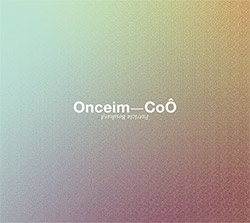
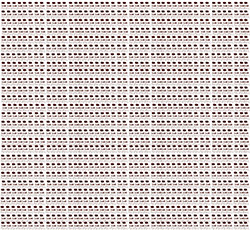

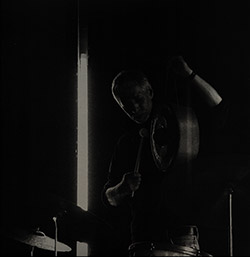
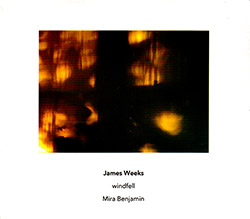
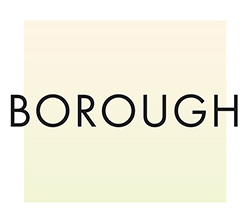

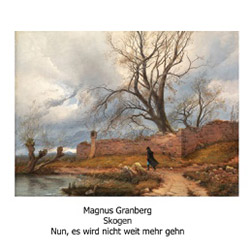


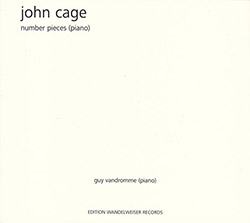

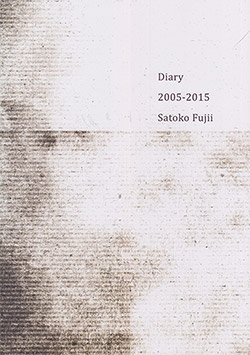

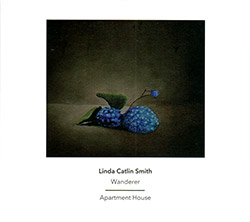












![Rodrigues, Ernesto / Nuno Torres / Guilherme Rodrigues: Whispers In The Moonlight - In Seven Movements [2CDs]](https://www.teuthida.com/productImages/misc4/35765.jpg)
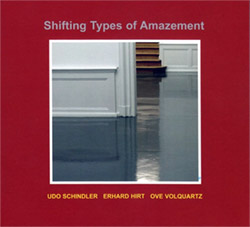

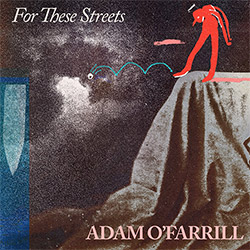
![Cocks, Laura: FATHM [VINYL]](https://www.teuthida.com/productImages/misc4/36055.jpg)
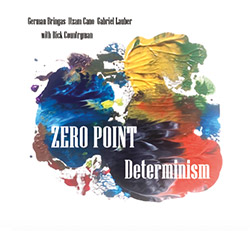
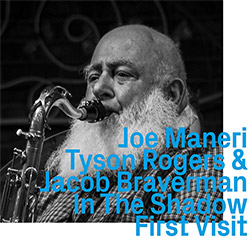
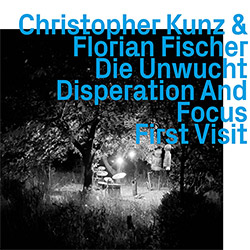
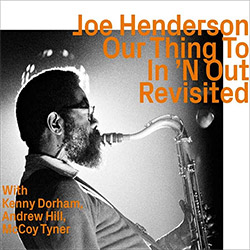

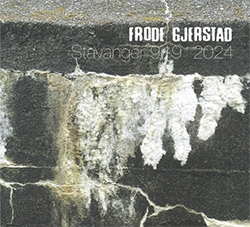
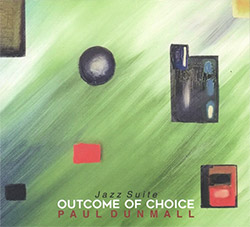
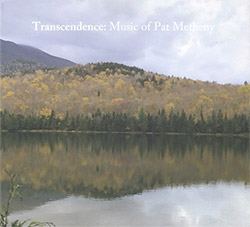
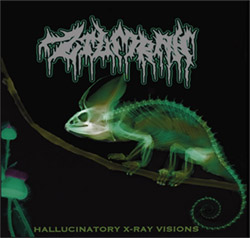
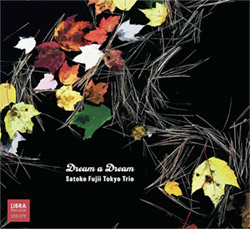
![Ackerley / Prymek / Turner: All Hope With Sleeping Minds [CASSETTE]](https://www.teuthida.com/productImages/misc4/35950.jpg)
![Myers, David Lee : Tin Drop Tear [BOOK w/ DOWNLOAD]](https://www.teuthida.com/productImages/misc4/36030.jpg)

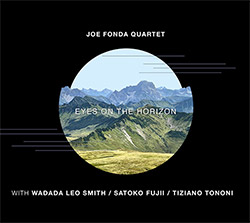
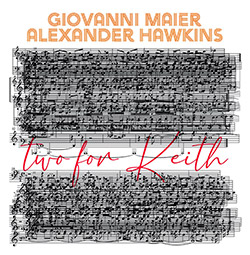
![Schindler, Udo / Sandy Ewen / Damon Smith: Munich Sound Studies Vols. 4, 5 & 6 [3 CDs]](https://www.teuthida.com/productImages/misc4/35966.jpg)
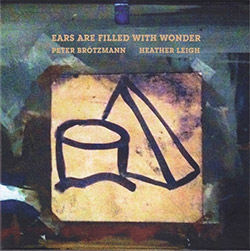


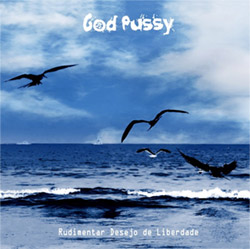


![Turbulence Orchestra & Sub-Units: Smear Out the Difficulties (Double Live) [2 CDs]](https://www.teuthida.com/productImages/misc4/36048.jpg)
![Perelman, Ivo / Tyshawn Sorey: Paralell Aesthetics [2 CDs]](https://www.teuthida.com/productImages/misc4/35871.jpg)
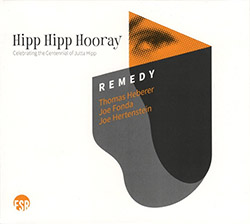

![Sjostrom, Harri: SoundScapes #4 Festival Berlin 2023 [3 CDs]](https://www.teuthida.com/productImages/misc4/35874.jpg)
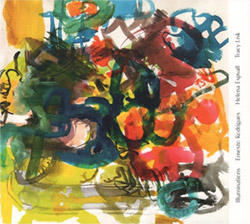


![Glenn, Jordan: Flustered [CASSETTE]](https://www.teuthida.com/productImages/misc4/35948.jpg)


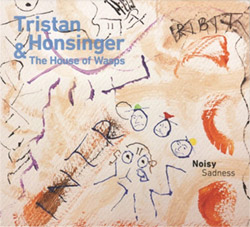
![Lindorff-Ellery, Evan: Church Recordings from Monhegan [CASSETTE]](https://www.teuthida.com/productImages/misc4/35949.jpg)
![Schindler, Udo / Werner Dafeldecker / Gunnar Geisse: Travelling Sound Images - Cognitive Transfers [Trio]](https://www.teuthida.com/productImages/misc4/35767.jpg)
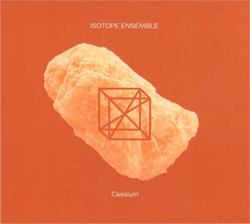
![Egberth, Dennis: The Dennis Egberth Dynasty [VINYL]](https://www.teuthida.com/productImages/misc4/35549.jpg)


![Schindler, Udo / Rieko Okuda / Eric Zwang Eriksson: Disturbed Terrains [2 CDs]](https://www.teuthida.com/productImages/misc4/35330.jpg)
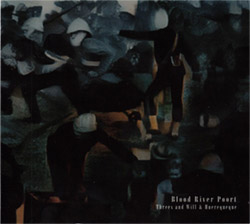
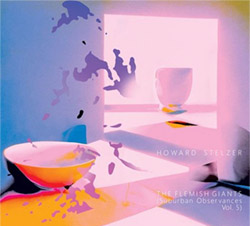
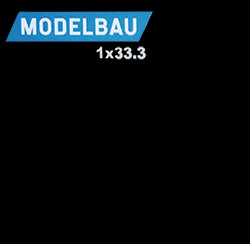
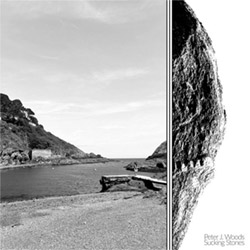
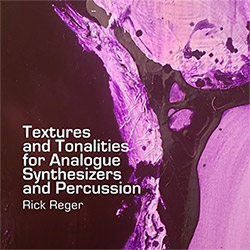

![Olencki, Weston : Pearls Ground Down To Powder [VINYL]](https://www.teuthida.com/productImages/misc4/35956.jpg)
![Myers, David Lee: Oculus [2CDs]](https://www.teuthida.com/productImages/misc4/35857.jpg)


![dustsceawung: dustsceawung [CASSETTE w/ Download]](https://www.teuthida.com/productImages/misc4/35753.jpg)
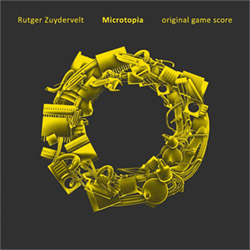



![Halls of the Machine: Atmospheres For Lovers And Sleepers [CASSETTE w/ DOWNLOAD]](https://www.teuthida.com/productImages/misc4/35806.jpg)
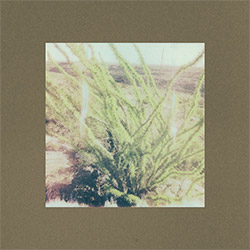
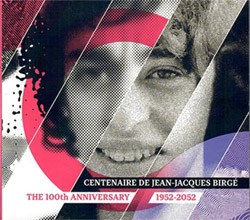
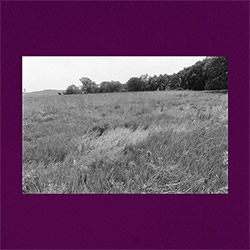
![AHC (Alexander Cooper): Lase [2 CDs]](https://www.teuthida.com/productImages/misc4/35754.jpg)



![Fagaschinski, Kai / Yan Jun : Graveyard Processions [VINYL w/ DOWNLOAD]](https://www.teuthida.com/productImages/misc4/35474.jpg)
![Brant, Cody / Carl Kruger: Smoke Detail [CASSETTE w/ DOWNLOAD]](https://www.teuthida.com/productImages/misc4/35551.jpg)








![Zorn, John / JACK Quartet: The Complete String Quartets [2 CDs]](https://www.teuthida.com/productImages/misc4/35609.jpg)

![Lonsdale, Eden: Dawnings [2 CDs]](https://www.teuthida.com/productImages/misc4/35480.jpg)







![Sanna, Claudio: Compositori Sardi Contemporanei II [2 CDs]](https://www.teuthida.com/productImages/misc4/35317.jpg)







![Zurria, Manuel: Fame di Vento [3 CDs]](https://www.teuthida.com/productImages/misc4/35167.jpg)

![Granberg, Magnus / Nattens Inbrott / Skogen: Holde Traume, Kehret Wieder! [2 CDs]](https://www.teuthida.com/productImages/misc4/35038.jpg)

![Electric Bird Noise / Derek Roddy: 8-10-22 [CD EP]](https://www.teuthida.com/productImages/misc4/35970.jpg)








![Elephant9 : Mythical River [VINYL]](https://www.teuthida.com/productImages/misc4/34624.jpg)



![Elephant9 with Terje Rypdal: Catching Fire [VINYL 2 LPs]](https://www.teuthida.com/productImages/misc4/35355.jpg)
![Deerlady (Obomsawin, Mali / Magdalena Abrego): Greatest Hits [VINYL]](https://www.teuthida.com/productImages/misc4/34876.jpg)







![Surplus 1980: Illusion of Consistency [CD]](https://www.teuthida.com/productImages/misc4/35069.jpg)
![Staiano, Moe: Away Towards the Light [VINYL + DOWNLOAD]](https://www.teuthida.com/productImages/misc4/35037.jpg)



![Caveira (Gomes / Sousa / Abras / Ferrandini): Ficar Vivo [VINYL]](https://www.teuthida.com/productImages/misc4/34643.jpg)
![Coley, Byron: Dating Tips for Touring Bands [VINYL]](https://www.teuthida.com/productImages/misc4/17906.jpg)

![Lost Kisses: My Life is Sad & Funny [DVD]](https://www.teuthida.com/productImages/misc4/lostKissesDVD.jpg)